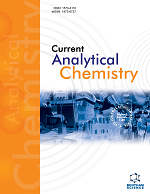
Full text loading...
We use cookies to track usage and preferences.I Understand
Access to clean air, a vital necessity for life, faces severe constraints globally due to industrialization and urbanization, leading to widespread air quality deterioration. To safeguard human health and the environment from detrimental effects, the essential components of proper monitoring, assessment, and management of air quality are paramount. Conventional air quality analytical techniques such as gas chromatography/ mass spectrometry, selected ion flow tube mass spectrometry, thermal desorption/ gas chromatography, and mass spectrometry are widely used for air quality analysis. These methods, however, are laborious, necessitate sample preparation, require expansive and hazardous reagents, and have a high cost of equipment and maintenance. As such, more rapid, sensitive, specific, cost-effective, portable, user-friendly, and environmentally friendly analytical tools are required for efficient air quality monitoring and control. Over the years, various techniques have emerged to address these challenges, including mobile sensors, microbial monitoring, the Internet of Things (IoT), biomonitoring, and bio- and nanosensors in both indoor and outdoor settings. This paper offers an overview of recent advancements in air quality monitoring and assessment methods. The review encompasses sample preparations for air pollutants, data analysis methodologies, and monitoring strategies. It also delves into the crucial role of microorganisms in air quality analysis. Additionally, the paper explores the applications of the Internet of Things (IoT) and biosensors in air quality monitoring and assessment, elucidating their roles in advancing these endeavors. The paper concludes by presenting insightful perspectives on the current state of air quality monitoring techniques and outlining future directions for research and development in this critical field.

Article metrics loading...

Full text loading...
References


Data & Media loading...

